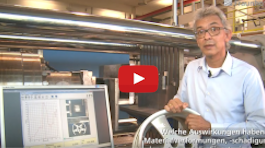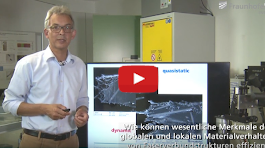Crash Safety and Damage Mechanics
We develop and implement material and failure models and utilize them in crash and process simulations. We also use special testing techniques (e.g. local strain measurements, torsion and biaxial tensile tests) to characterize materials and test components. By simulating various trials, we determine the model parameters and validate the practicability of new numerical methods. The effects of manufacturing processes on component behavior are paid particular attention.
Modern CAE-assisted developments require characteristic material parameters that correspond to specific load situations in order to produce designs and assess safety. Crash-relevant material values related to the strain rate or load speed are also needed to determine vehicle crash safety or accident-related impact loads on transportation containers: we determine the values for different materials and joins via high-speed tests that involve high-speed video and infrared cameras as well as optical evaluation processes. Our component crash tests are used to validate numerical simulations and provide conclusive assessments.
We characterize the mechanical properties of joints and assess them in terms of their deformation and failure behavior. A particular focus of our work is joint modeling for crash simulations, as this is the only way to analyze such a large number of different joints in the whole vehicle structure, thousands of them, and predict their capacity. By simulating joining processes such as punch riveting we are able to determine the aspects of the process that influence the joint properties.
What we offer
- Characterization of the deformation and failure behavior of materials, components and joint connections under variable load types and speeds up to 50"m" /"s" ans strain rates above 103s-1
- Development and validation of material models and numerical methods for crash simulation with consideration of manufacturing influences
- Method development for substitute modeling of connected joints for crash simulation
- Fracture dynamic evaluation of safety-critical components
- Innovative measurement technology for dynamic processes, measurement data (field) correlation
Contact us! Together we'll find a customized solution for the challenges you face.
 Fraunhofer Institute for Mechanics of Materials IWM
Fraunhofer Institute for Mechanics of Materials IWM



